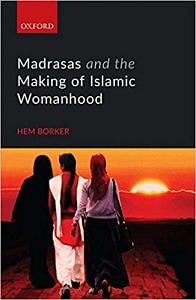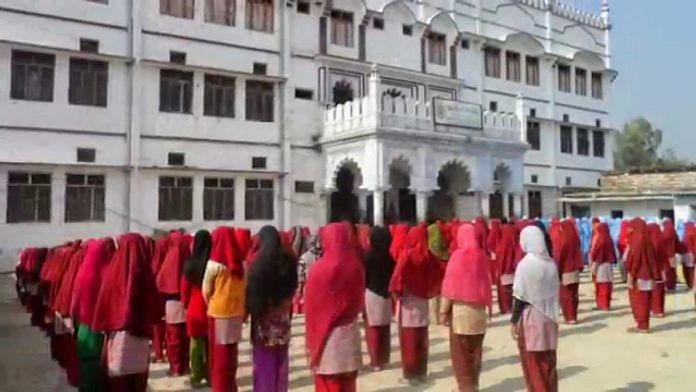Author Hem Borker in this excerpt reveals to his readers that for Muslim parents preparing their girls for ‘afterlife’ matters more than life’s journey itself.
All the parents I spoke to unanimously stated that education is necessary for girls. There seemed to be no question in their minds about the need for girls to get educated. As one of the mothers said, ‘These days everyone’s daughters study’ (‘Aaj kal to sabki ladkiyan padhti likhti hain’), almost like it was absurd to even think that someone would choose not to educate their daughter. For parents the bigger question revolved around finding the ‘right’ school for their daughters.
Literature on girls’ madrasas, especially in the South Asian context, highlights some critical issues motivating the choice of madrasa education. Several scholars highlight the importance of economic factors by illustrating how madrasas are often the only affordable option for poor Muslims (Jha and Jhingran 2005), with obvious economic benefits such as no fees, free boarding, and lodging (Engineer 2001). In a similar vein, some scholars present madrasas as viable alternatives in a context of declining or inadequate government schools, especially in rural areas (Jeffery, Jeffery, and Jeffrey 2005). A second set of studies focus on identity related factors (Ahmad 2002; Alam 2003; Saiyed and Talib 1985) arguing that parental concerns about fostering a distinct Muslim identity motivate the choice of madrasas.
The problem with each of the above-mentioned arguments is that they tend to frame educational choices as religious madrasas versus the so-called mainstream secular schools. Scholars who have worked on madrasas in the subcontinent, such as Bano (2012), rightly argue that the choice of madrasa education is often an attempt to complement secular education with religious knowledge rather than substitute secular schooling. Although my fieldwork resonates with this third line of argument, it calls for a more critical approach by presenting the complexity of educational choices. In the parents’ understanding of girls’ madrasas as the ‘right’ kind of school for their daughters, the mixed curriculum which combines religious and secular subjects is just one amongst many intertwined reasons. The following section draws on interviews and discussions with parents of the girls studying in Madrasa Jamiatul Mominat to examine these reasons.
For the parents in my field setting, education meant both dini and duniyavi talim. In fact, they often used the words madrasa and school interchangeably to refer to Jamiatul Mominat as the ‘right school’ that combined both kinds of knowledge—worldly and religious—to deliver a complete education. Similarly, the choice of shifting girls from regular schools to Jamiatul Mominat (as the admission policy of the madrasa requires the girls to have studied up to class 7) was explained citing similar reasons. As one of the mothers described it, ‘We wanted a school that teaches dini and duniyavi talim so we sent her here. We do not have berukhi (problem) with the other school but it did not have Islamiyat and a Muslim mahaul’.
Parents expressed the importance of religious education in Jamiatul Mominat as a rather obvious, almost commonsensical choice. They invariably discussed the value of dini talim by making references to the religious sanction that such education enjoys in Islam. Some, like one of the fathers cited below, explained the logic of their decision by giving the analogy of a traveller and talked about how madrasa education prepared children for the destination (akhirat or afterlife) rather than the journey. This father likened the benefits of madrasa education to ‘building a bank balance’ where instead of money the girls were accumulating virtues, which they could cash in in their afterlife.
The only bank balance that Muslims have to build is afterlife. In this life you will live till 60/70/80 years then you will die. The choice is similar to instances when a person has to decide how to travel. You have a certain amount of money; you can spend it in travelling comfortably by AC (air-conditioned compartment) train or travel by local (general compartment). If you travel by local, yes you will be discomfited for a few hours but that will allow you to save and be comfortable at your destination. This (madrasa) study is like travelling by local—yes, you will be discomfited by the hardship of living, a tough timetable, strict schedules and constant monitoring, but you only stand to gain more in your destination.
—Father of Arshi and Shabnam
Similarly, Zainab’s mother compared the image of a regular student carrying a school bag on her/his back with a madrasa student hugging the Quran. She employed the comparison to contend that madrasa students stood at an advantage, as their education would continue to benefit them in the afterlife, whereas the uses of school education were confined to this world.
The way children hang their bags on their back (peeche latka kar) and go to school … The knowledge they get there will also remain behind in this world (peeche choot jayegi), whereas the way we hug the Quran to our chest (seene se laga kar), that way the education gained in a madrasa will remain and help in our afterlife (madrase ki padai akhiraat main saath degi).
—Mother of Zainab
While parents stressed on the importance of dini talim, they often qualified their responses by saying that the entire exercise was meaningful only if their daughters learnt to ‘practice Islam the right way’. The madrasa prescriptions were seen as epitomizing this right way. In this regard, the parents viewed madrasas as representing more than an aam (ordinary) school. It was a place of teaching like a school but one whose teaching and learning was placed on a higher moral ground as it was closely intertwined with ideas of piety and worship. One of the mothers told me proudly how she did not heed to her daughter’s request to write a letter asking for permission to send her home as she was unwell and losing hair.
I told my daughter, ‘bal nahi to nahi’ (it is all right if you are losing hair); if tomorrow you lose your jaan (life) it is also all right as long as imaan (Islam) acquires a set place in your heart.
—Mother of Ziya
This understanding of the madrasa as a pious place often put its practices beyond questioning. In fact, many parents saw the disciplining and hardship of madrasa life as a part of the education process, for both the parents and the children. The key lesson being that following one’s faith was not easy and it was only in the face of difficulty that an asli momin (true believer’s) mettle came through. Mothers proudly talked about how their girls complained about the food, the restrictions, the cold weather, and so on, but they did not pay heed to their daughters’ complaints for their benefit so that they could finish their education. For example:
Mother of Abida: Last December Abida told me that she feels very cold at night and wants to come home. (There are no beds in the madrasa; girls sleep on a mattress on the floor with a blanket.) I spoke to the teacher once but she said that I could send another blanket. Then I came to meet the Principal, she told me all this is just the Shaitan (Devil) trying to distract Abida. When I thought about it, I realized it was true. The same thing happened with my sister-in-law’s daughter. She kept falling ill. Sometimes it was eye ache, sometimes fever, sometimes something else. The Shaitan was working to distract her.
(Three other mothers sitting with two daughters nodded.)
Hem: Then what did you do?
Mother of Abida: She is sitting here; you ask her what I said. I told her this is the meagre cost you have to pay to become an alima. In heaven you will be respected, honoured, and you will bring honour to your entire family. This year was so cold but she did not complain even once.
Thus, the persuasive force of madrasa education was expressed in terms of Islamic notions of Allah ki raza (God’s acceptance), akhirat (afterlife), and sawab (religious merit).
There was a heightened sense of pride by virtue of being part of a divine mission through their daughters, especially amongst the mothers. Though the parents did not cite this as a reason for sending their daughters to the madrasa, it was often expressed in discussions around changes in their households once their children started pursuing religious education. There was a clear sense that having a madrasa-educated daughter in the house brought social prestige to the family. One of the discussions I observed in the madrasa while a group of mothers was talking to teachers was revealing in this regard:
Mother of Nida: Today I have come to hear Nida, this is her first taqrir (speech) in front of so many people.
The teacher explained to the researcher: Doing all this here (madrasa) greatly enhances the ‘confidence’ of the girls, later when they do dawah (spreading faith) then you should see the ‘change’ in them.
Mother of Abida: We have also benefitted so much. When Abida comes home, yahan ki batein batati hai (she tells everyone what she has learnt), Huzoor ne kya kya farmaya hai (what the Prophet has said). We are also trying to practice amal.
Mother of Zainab: Zainab’s father has absolutely reduced TV viewing. He now watches it only for work. At (our son) Owaiz’s wedding he did not let us click one photograph.
Mother of Aamna: Now, as a rule, we recite a dua the moment we leave the house or enter it, and at the time of meals.
 This excerpt from ‘Madrasas and the Making of Islamic Womanhood’ by Hem Borker has been taken with due permission from the book’s publishers Oxford University Press. The book was published in 2018.
This excerpt from ‘Madrasas and the Making of Islamic Womanhood’ by Hem Borker has been taken with due permission from the book’s publishers Oxford University Press. The book was published in 2018.



